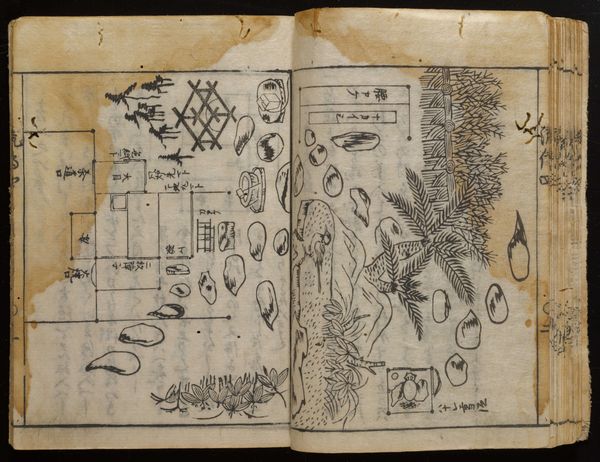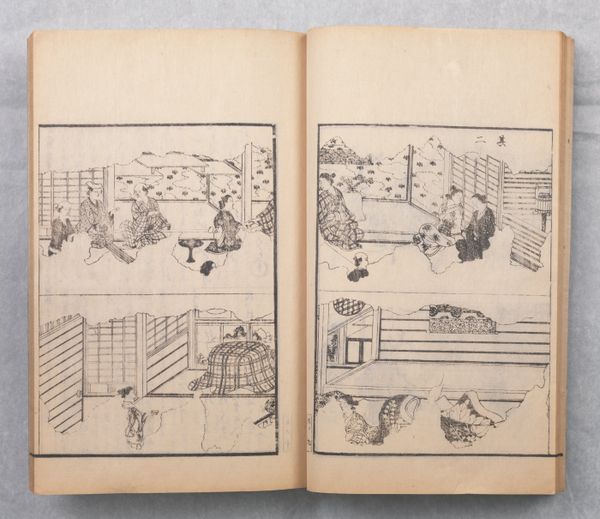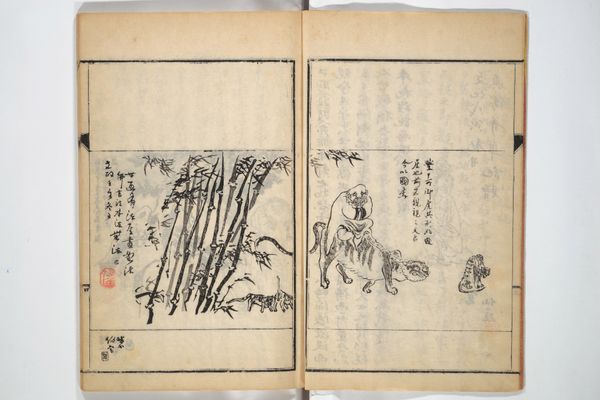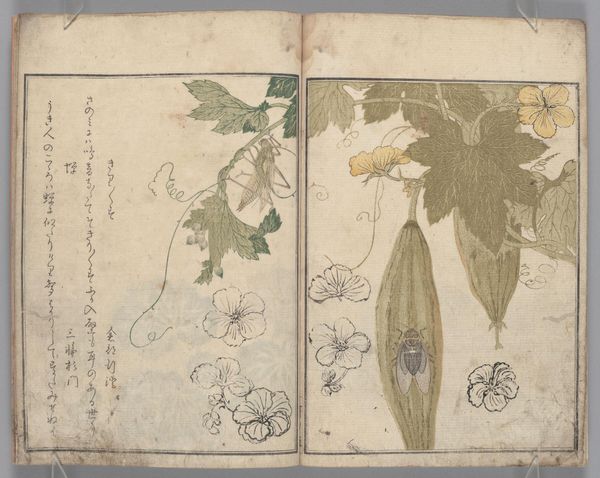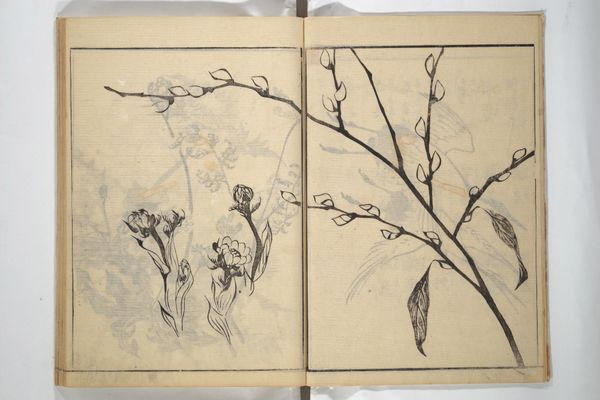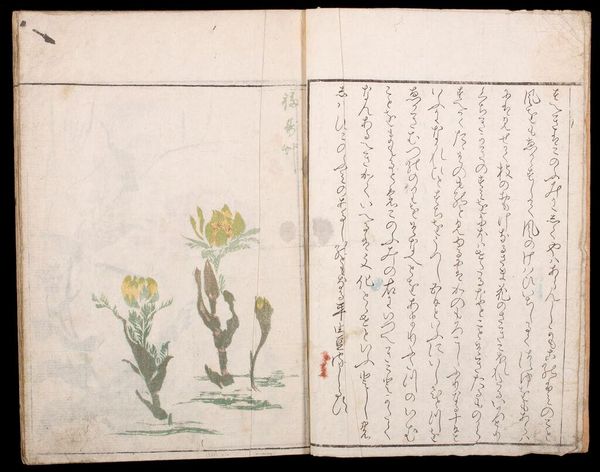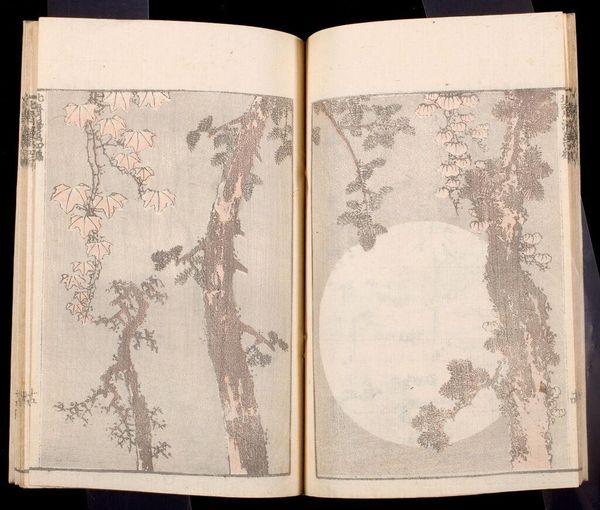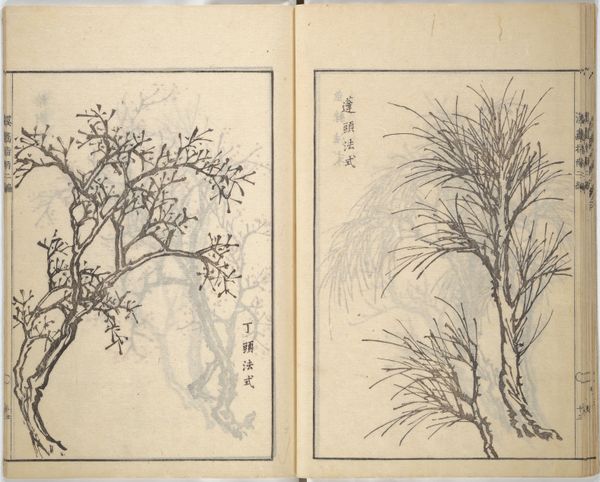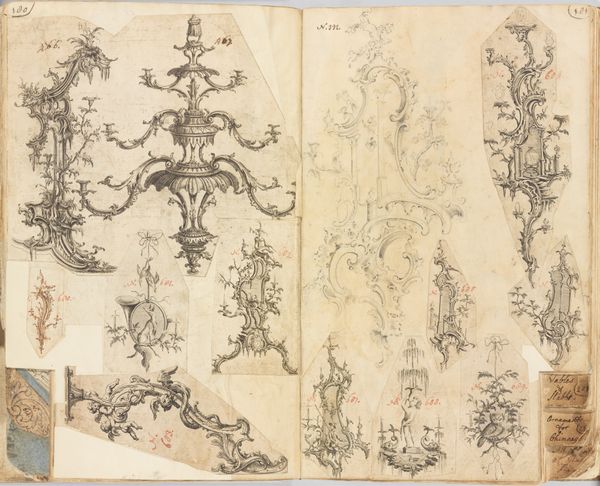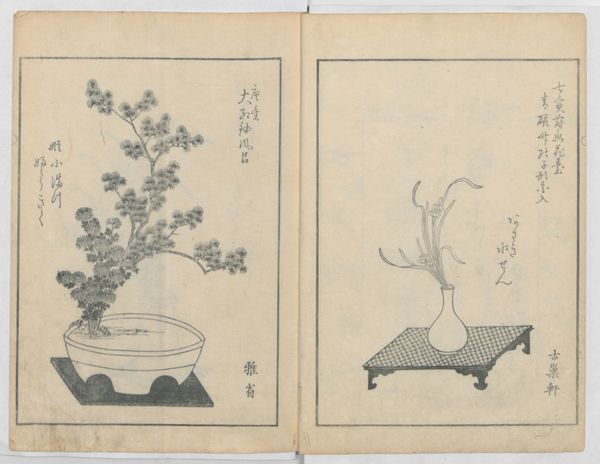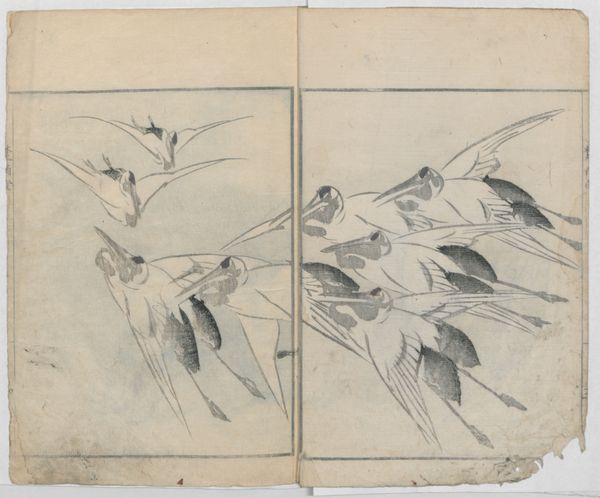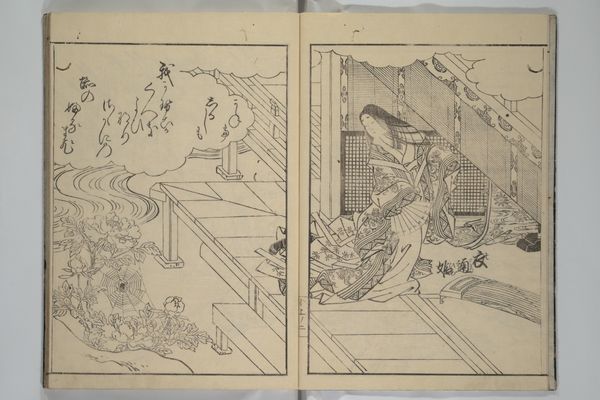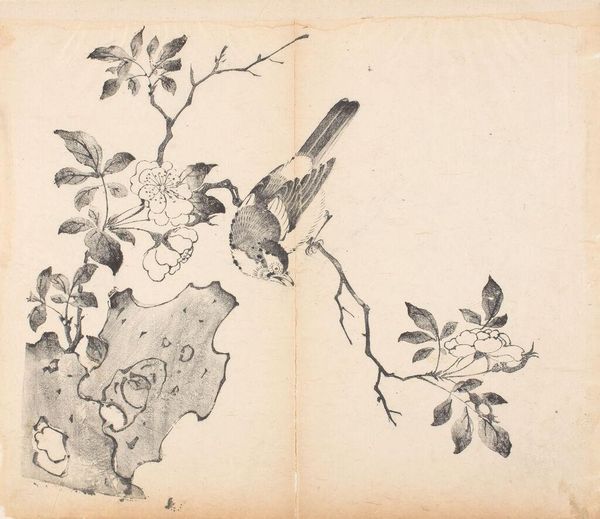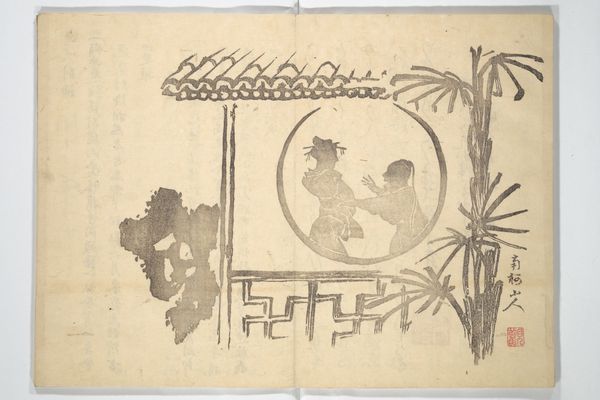
One Hundred Examples of Kai-Style Flower Arrangements (Kōyō seika hyakuhei zu 甲陽生花百瓶図) Possibly 1774 - 1775
0:00
0:00
drawing, paper, ink-on-paper, ink
#
drawing
#
book
#
asian-art
#
sketch book
#
ukiyo-e
#
japan
#
paper
#
ink-on-paper
#
personal sketchbook
#
ink
#
sketchbook drawing
Dimensions: 10 11/16 × 6 13/16 × 3/8 in. (27.15 × 17.3 × 0.95 cm)
Copyright: Public Domain
Shōmeian Rochū rendered these pages of flower arrangements using woodblock printing techniques. Here, the stark lines articulate complex, stylized floral arrangements within simple vases. Look closely at the plum blossoms. In East Asian art, the plum blossom symbolizes perseverance and hope because it is the first flower to bloom in late winter, signaling the arrival of spring. This symbol transcends time and space, and can be found in Chinese paintings from the Song dynasty to contemporary Japanese art. Consider how the arrangement—a practice of controlled nature—mirrors humanity's attempt to order the chaos of existence. The flowers, carefully placed, speak to a deeper need for harmony. It’s an endless cycle, isn’t it? From the quiet contemplation of a single bloom to grand allegorical narratives, the language of flowers is forever evolving.
Comments
No comments
Be the first to comment and join the conversation on the ultimate creative platform.
